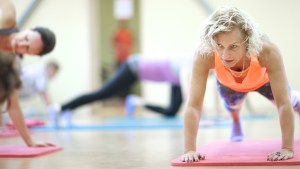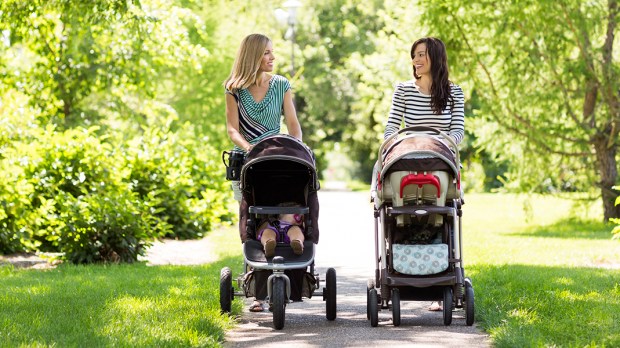One of the most common questions I hear from women is, “How do I get back in shape after I have a baby?” This is usually code for, “How do I lose the weight I gained in my arms and legs, and flatten out my stomach?”
Trust me, I get it. It was the same question I tried — and failed — to answer after four out of five childbirths. I was almost wholly concerned with what my body looked like, not what kind of aerobic and muscular capacity it possessed. But even women who truly are interested in recovering their pre-pregnancy muscular and aerobic condition — runners, for example, or CrossFit enthusiasts — often miss the most important thing about the postpartum period: healing.
Childbirth is one of the most physically demanding events in life. Even with the modern advances of epidurals and c-sections, maternal mortality is ever-present. And yet, we rarely talk about how to heal our whole bodies after childbirth — especially after the prescribed six weeks of limited activity are over. Instead, we jump right into discussing the best ways to stress our bodies through exercise, right after the most physically stressful activity we’ve ever endured.
As I tell my children, you can’t run before you walk. Healing must come before exercise, and luckily, there are three super-simple ways to help our bodies heal from childbirth. None require fancy equipment, and they can be done literally all day long.
1Diaphragmatic Breathing
One of the biggest contributing factors to the development of diastasis recti — the separation of the abdominal walls during pregnancy that fails to heal, commonly knows as the “pregnancy pooch”– is improper breathing.
Women in particular tend to “chest-breathe,” which means our shoulders rise and fall with each breath. This is also known as shallow breathing, because it doesn’t allow the diaphragm to retract and the lungs to fully expand. Conversely, many people “belly breathe”– their bellies rise and fall rather than their shoulders. Belly breathing also fails to fully engage the diaphragm–worse, it puts strain on the abdominal muscles and can actually prevent healing from diastasis recti.
The first and most important way for a new mom to heal is to learn diaphragmatic breathing. Diaphragmatic breathing requires you to brace your core and fully expand your lungs with each breath. Your ribs should expand 360° – so if only the front of your rib cage is moving in and out, that’s not enough. The sides and back of your ribcage should also expand and contract with each breath. It takes practice, but it will not only help restore your core integrity, it will also help strengthen your abdominal muscles and begin to correct any diastasis recti.
2Pelvic Tilt
Pelvic tilts are incredibly important both during and after pregnancy to maintain core integrity, but if you didn’t do these while you were pregnant don’t worry! It’s not too late to start, and they’re very simple. Start by lying on your back, taking a deep breath in, then exhaling and pulling your belly button back to your spine. Keep your hands resting lightly on your tummy so you can feel your abdomen tighten and your stomach flatten out (your lower back should be pressing down into the floor, not arching). Once you’ve mastered these lying down, do them on your hands and knees for the extra resistance of gravity. Then progress to standing pelvic tilts — and do them all day long! There’s no way to overdo the pelvic tilt, and the more you do, the quicker your abdominal muscles will begin to pull back together.
3Walk (a lot)
There’s a reason your in-laws bought you that $300 all-terrain stroller — I have no idea what that reason is, but it doesn’t matter. Take advantage of that gift and walk — everywhere. Walking is one of the best things you can do to heal your body, correct your alignment, and strengthen those joints that got so wobbly from all that pregnancy relaxing. As our primary form of travel, walking is absolutely fundamental for human health. It activates nearly all the core muscles, as well as strengthening your legs and helping increase your aerobic capacity, so don’t discount the healing benefits you can get from long, leisurely strolls.
Once you have your doctor’s clearance and your body feels strong and energized, you can definitely move beyond healing and into gentle exercise like swimming or Pilates. But keep doing these three things. Not only are they healing, they’re also powerful ways to prevent a diastasis recti relapse and to keep you strong and healthy.

Read more:
The 3 best exercises for women over 40

Read more:
The beautiful process your body goes though in the postpartum period

